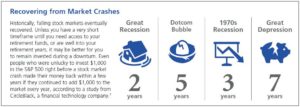Investing in foreign stocks provides access to a world of opportunities outside the United States, w...
Oct 28, 2024
Historical Markets in Presidential Election Years
The performance of the stock market during presidential election years has long been a subject of interest for investors. Historically, there have been notable differences in stock market returns between election years and non-election years, and various factors contribute to these variations.
With the S&P 500 and NASDAQ hitting multiple record highs so far in 2024 – and a presidential election looming at the end of the year – now is an opportune moment to examine these trends and offer guidance on what investors should and should not do.
Historical Trends
Election Year Volatility: Historically, election years are marked by increased volatility in the stock market (but in 2024, market volatility is close to all-time lows). Uncertainty surrounding potential changes in fiscal and monetary policies, trade relations, and regulatory frameworks can lead to market fluctuations. Investors often react to the anticipated impacts of a new administration's policies on different sectors of the economy.
Incumbent Advantage: Data suggests that when the incumbent party wins the election, the stock market tends to perform better. This can be attributed to the continuity and predictability in policies, which investors generally favor. Conversely, when there is a change in administration, the initial reaction might be negative due to uncertainty.
Post-Election Rally: Regardless of which party wins, there is often a post-election rally. Once the election results are finalized, the uncertainty dissipates, leading to a sense of stability and optimism among investors. Historically, the stock market has experienced positive returns in the months following an election.
Non-Election Years: Non-election years typically exhibit more stable and predictable market performance. Without the added layer of political uncertainty, market movements are more influenced by economic fundamentals such as corporate earnings, interest rates, and global economic conditions.
Stock Market Returns Since 1952
The S&P 500 has historically averaged a 7% gain during U.S. presidential election years since 1952, according to a study by LPL Financial. While a 7% gain is very respectable, it does fall short of the 16.8% average gain seen in the year preceding an election year (remember, the S&P 500 saw a 21.9% gain in 2023).
Additionally, it is below the approximately 10% average annual return for the U.S. stock market in typical years. It's important to note that the study's timeframe includes only 18 presidential elections since 1952, which is not really enough data sets to be statistically significant. But still, the data is interesting to review.

Source: LPL Research, FactSet 12/05/23 (1950–2022)
Looking ahead to the remainder of 2024, there is positive news for investors. Historically, the S&P 500 has not experienced a decline during a presidential re-election year since 1952. This trend suggests that re-election years can be particularly favorable for stock market performance.
Explanations for Trends
Policy Uncertainty: Elections bring the potential for significant policy changes, which can impact various sectors differently. For instance, discussions around healthcare reform, tax policies, and environmental regulations can create uncertainty for businesses and investors.
Market Sentiment: Investor sentiment plays a crucial role in market performance. During election years, media coverage, political debates, and opinion polls can influence investor sentiment and lead to increased market volatility.
Economic Indicators: Economic indicators such as GDP growth, unemployment rates, and inflation also play a role. During election years, candidates often highlight economic performance as part of their campaigns, which can lead to increased scrutiny and reactions from investors.
Guidance for Investors
Focus on Long-Term Goals: Investors should maintain a long-term perspective and avoid making impulsive decisions based on short-term political events. Historical data shows that the stock market tends to recover from election-induced volatility.
Diversification: Diversifying investments across different asset classes and sectors can help mitigate risks associated with election-year volatility. A welldiversified portfolio is better positioned to withstand market fluctuations.
Avoid Timing the Market: Attempting to time the market based on election outcomes is risky and often counterproductive. Instead, investors should stick to their investment strategy and make adjustments based on economic fundamentals rather than political events.
Monitor Economic Fundamentals: Keeping an eye on key economic indicators can provide valuable insights into market trends. Factors such as corporate earnings, interest rates, and global economic conditions are likely to have a more sustained impact on market performance than election results.
Stay Informed but Rational: Staying informed about political developments is important, but investors should remain rational and avoid making decisions driven by emotions or media hype. Analyzing the potential impacts of policy changes on specific sectors can help in making informed investment decisions.
Focus On Your Financial Planning
The stock market's performance during presidential election years often differs from non-election years due to increased volatility and uncertainty. Historical trends show that while there is initial volatility, the market tends to stabilize post-election.
As the S&P 500 and NASDAQ approach record highs in 2024, investors should focus on long-term goals, diversify their portfolios, avoid market timing, monitor economic fundamentals, and stay informed but rational. By adhering to these principles, investors can navigate the complexities of election years and position themselves for long-term success.
Copyright © 2024 FMeX. All rights reserved. Distributed by Financial Media Exchange.
You may also like
May 2, 2017
Traditional investment indexes such as the S&P 500 are weighted based on market capitalization, ...
Jan 20, 2019
In October 2018, the Dow Jones Industrial Average, a widely followed measure of stock-price performa...









